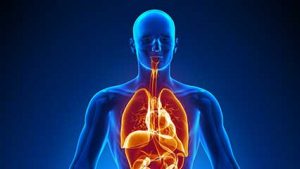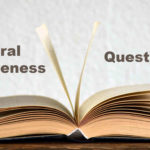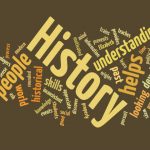52 Health and Medicine GK Quiz Questions Answers – Biology General Knowledge Quiz – Science Quiz

Human Bones Biology Quiz
1) Which of these connects bones?
Answer: Ligaments.
Ligaments, or tough strands of tissue, connect the bones to each other.
2) What is the largest joint in the human body?
Answer: Knee.
The biggest joint in the human body is the knee. A joint is a place where bones meet.
3) How many bones does an adult human have?
Answer: 206.
An adult human has 206 bones. A newborn has many more, but these fuse together over time.
4) Human bone is made of the mineral:
Answer: Calcium.
Human bone is made, in part, of calcium, particularly a form called hydroxylapatite. To maintain healthy bones, our diet needs to be rich in calcium.
5) The smallest bone in the human body is the:
Answer: Stapes.
The tiny stapes, one of the three little bones called ossicles within the ear canal, is the smallest bone in the human body.
6) What is the most commonly broken bone in the human body?
Answer: The clavicle.
The clavicle, or collarbone, is comparatively delicate. Athletes, in particular, often suffer from broken clavicles, as do victims of falls.
7) The mandible is located in the:
Answer: Jaw.
The mandible is the lower jawbone. It holds the lower teeth in place.
8) Where is the tibia found?
Answer: Leg.
The tibia, also called the shin bone, is in the leg.
Human Organs – Health and Medicine Biology General Knowledge Science Quiz Part 2
9) What is the main organ of the cardiovascular system?
Answer: Heart.
The heart is the main organ of the cardiovascular system, which supplies blood to the body.
10) What is another word for the alimentary canal?
Answer: Digestive tract.
The alimentary canal and the digestive tract describe the organs through which food passes in the human body.
11) If you lined up all the neurons in the brain end to end, they would stretch:
Answer: 1,000 kilometers.
The brain’s 100,000,000,000 neurons would stretch approximately 621 miles (1,000 kilometers). They would be too narrow to see without a microscope, however!
12) What is the part of the eye where the image must be focused?
Answer: Retina.
The eye contains a lens that bends light rays so that they meet, focusing on a part of the eye known as the retina.
13) For what organ is dialysis used?
Answer: Kidney.
When the kidney fails in its work of filtering impurities in the bloodstream, artificial filtering called dialysis is often used.
14) What percentage of our body energy is used to power the brain?
Answer: 20.
The brain uses some 20 percent of all caloric energy. This is about twice the amount required by chimpanzees and other nonhuman primates.
15) What are the chambers of the heart called?
Answer: Atria and ventricles.
The chambers of the heart are called atria and ventricles. There are two of each.
16) Which of these are found in the eyes?
Answer: Cones.
Cones are photoreceptor cells in the retinas of vertebrates. They are essential for distinguishing colors.
17) On average, how many times does the human heart beat each minute?
Answer: 70.
The heart muscle beats an average of 70 times per minute. More than 1 gallon (3.8 liters) of blood pass through the heart every minute.
The Skeletal Puzzle – Health and Medicine Biology General Knowledge Science Quiz Part 3
18) What is the smallest bone in the human body?
Answer: Stapes.
The stapes is a tiny bone in the middle ear. It is the smallest bone in the human body.
19) Animals with spines are called:
Answer: Vertebrates.
A vertebrate is an animal with a backbone. Fishes, amphibians, reptiles, birds, and mammals, including humans, are all vertebrates.
20) About how many bones do newborn humans have?
Answer: 300.
Newborn humans are born with a little more than 300 bones. Some of these fuse together, so that adult humans have 206 bones.
21) Where on the human body is the mandible located?
Answer: Face.
The mandible is the lower jawbone. It is also called the inferior maxillary.
22) What did ancient people think caused tooth decay?
Answer: Tiny worms.
Sumerian clay tablets from 5,000 to 7,000 years ago attribute tooth decay to the work of tiny worms, a belief that persisted in many cultures until modern times.
Viruses, Bacteria, and Diseases Quiz
23) What is the scientific term for a disease that causes dizziness?
Answer: Vertigo.
Vertigo is a dizziness or disorientation in which the sufferer feels as though he is falling. It results from problems with the body’s balancing system, part of which is in the inner ear.
24) Who developed a vaccine against poliomyelitis?
Answer: Dr. Jonas Salk.
Dr. Jonas Salk tested his vaccine against poliomyelitis, then a very prevalent and dangerous disease, in 1954. The incidence of the disease has since fallen markedly.
25) What illness has no commonly used vaccine?
Answer: Cold.
The common cold has many causes. The other diseases are much more specific, and vaccines have been developed to combat them.
26) If a person has lockjaw, what disease is he or she suffering from?
Answer: Tetanus.
An acute infectious disease of the central nervous system, tetanus, or lockjaw, is caused by the bacterium Clostridium tetani.
27) What is the name of a deadly mosquito-borne disease?
Answer: Malaria.
Malaria is a serious disease that is spread by mosquitoes. It is found in tropical areas of the world.
Human Health – The Skeletal Puzzle – Health and Medicine Biology General Knowledge Science Quiz Part 4
28) What is the most prevalent noncontagious disease in the world?
Answer: Tooth decay.
Tooth decay is believed to be the most prevalent noncontagious disease in the world.
29) What causes the skin disease called shingles?
Answer: Viruses.
Viruses can cause skin blisters known as shingles.
30) Who discovered penicillin?
Answer: Alexander Fleming.
Scottish scientist Alexander Fleming’s discovery in 1928 of penicillin, the first antibiotic to successfully treat infections caused by bacteria, had far-reaching implications for medicine.
31) Who developed a vaccine against polio?
Answer: Jonas Salk.
Jonas Salk invented a vaccine against polio that, after being introduced in 1955, saved millions of people from the disease.
32) What causes the skin malady known as acne?
Answer: Extra oil production.
Extra oil production during the teenage years makes many in this age group suffer a skin inflammation known as acne.
The Human Body Quiz
33) What fraction of the human body is made up of blood?
Answer: 1/13.
Blood is the life fluid of the human body and the liquid that transports nutrients and removes waste. It makes up about 1/13 of the total weight of the human body.
34) Where is the pharynx located?
Answer: Neck.
The pharynx, or throat, is a part of the body that helps with eating and with breathing. It is a passage that leads from the mouth and nose to the esophagus and the larynx.
35) Where are red blood corpuscles formed?
Answer: The bones.
Red cells, formed in bone marrow, are the most numerous kind of blood cells. Each drop of blood contains about 300 million of them.
36) What is the average temperature of a healthy human, in centigrade?
Answer: 37.
The average temperature of a healthy human is 36.9 degrees.
37) What is the name of the system, in the human body, that transports blood?
Answer: Cardiovascular.
The cardiovascular system carries substances to and from all parts of the body in the blood.
38) Where is the esophagus located?
Answer: Chest.
The esophagus is a tube through which food passes from the pharynx to the stomach. The walls of the esophagus move in waves to push the food down the tube to the stomach.
Characteristics of the Human Body – Health and Medicine Biology General Knowledge Science Quiz Part 5
39) How many sweat glands does the average person have?
Answer: 2.6 million.
The average person has 2.6 million sweat glands, which are widely distributed over the body.
40) How many basic tastes can humans sense?
Answer: 5.
Humans can sense five basic tastes: salty, sweet, sour, bitter, and umami (representing chemicals known as amino acids).
41) What sensory function do the ears provide other than hearing?
Answer: Balance.
The ear is also responsible for maintaining the body’s equilibrium, or balance.
42) How many facial muscles are involved in speaking?
Answer: 70.
About 70 muscles are involved in speaking. These are located in several parts of the head, neck, and mouth.
43) What is the word for a person with very pale skin and eyes?
Answer: Albino.
An albino is a person or animal who is born without any natural pigmentation in the skin, eyes, or hair. Albinism is very rare.
44) How much blood is in the average human body?
Answer: 5.7 liters.
The average human carries about 192.7 ounces (5.7 liters) of blood. Altogether, this quantity of blood circulates through the body twice a minute.
Famous Doctors Quiz
45) Who wrote Al-Qanun fi al-tibb (The Canon of Medicine), one of the most famous works in the history of medicine?
Answer: Avicenna.
Avicenna’s The Canon of Medicine was divided into five books, each containing multiple treatises on topics ranging from anatomy and the humors to disease and therapeutics.
46) Who is considered by some medical historians to be the father of modern surgery?
Answer: Ambroise Paré.
French physician Ambroise Paré was one of the most-notable surgeons of the Renaissance and is regarded by some medical historians as the father of modern surgery.
47) Who wrote and illustrated the first comprehensive textbook of anatomy?
Answer: Andreas Vesalius.
In De humani corporis fabrica libri septem (“The Seven Books on the Structure of the Human Body”), printed in 1543, Andreas Vesalius provided extensive and accurate descriptions of the human body, giving anatomy a new language.
48) Who founded the science of microscopic anatomy?
Answer: Marcello Malpighi.
Italian physician and biologist Marcello Malpighi developed experimental methods to study living things by using microscopes, thereby founding the science of microscopic anatomy.
49) Who played a key role in transforming the organization and curriculum of modern medical education?
Answer: Sir William Osler.
Canadian physician Sir William Osler emphasized the importance of clinical experience in his medical teachings, ultimately becoming a key figure in the transformation of medical education by the beginning of the 20th century.
50) Who introduced the antiseptic principle into surgery?
Answer: Joseph Lister.
British surgeon and medical scientist Joseph Lister introduced the antiseptic principle into surgery in the 1860s.
51) Who was the first to observe structural differences between arteries and veins?
Answer: Galen of Pergamum.
Among Galen’s numerous contributions to early medicine was his observation of structural differences between arteries and veins.
52) Who was the first to recognize the full circulation of blood in the human body?
Answer: William Harvey.
William Harvey’s greatest achievement was to recognize that blood flows rapidly around the human body, being pumped through a single system of arteries and veins.
Read: Top 105 General Awareness (GK) Questions and Answers 2020



nice quiz
MEDICINE IS FUN